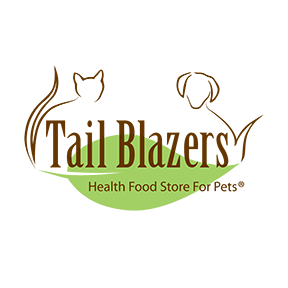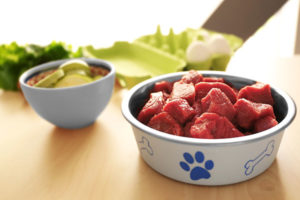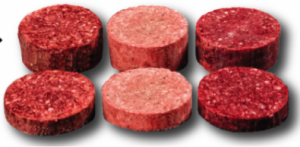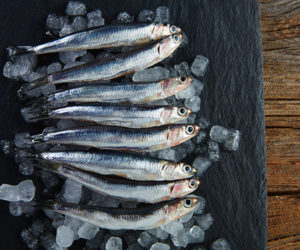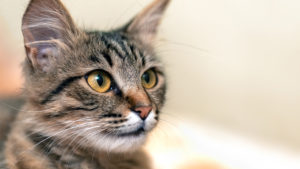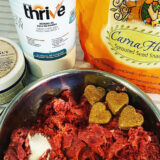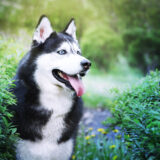Transitioning to a Raw Food Diet
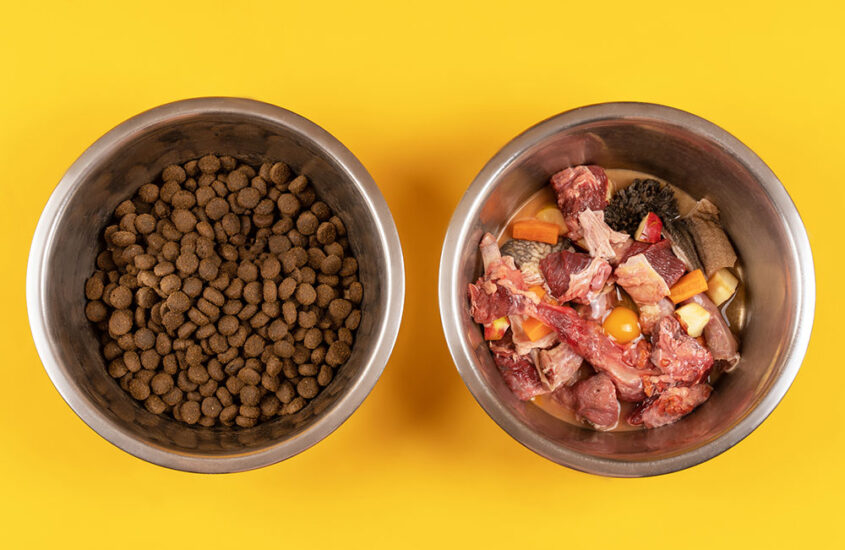
Today we will be discussing switching your pet to a raw food diet. We will go over what we look at when switching a pet, how much to feed your pet, and what to expect when switching. We hope you are as ready and excited as we are!
So, you want to switch to raw?
This is excellent news! There are so many noticeable benefits for you and your pet. Let’s talk logistics. Before we find the right diet for your pet we want to discuss any health concerns, or specific needs from you.
1. How old is your pet?
We ask this question to determine your pet’s needs in a raw diet. If they are a puppy, they may require more food, bones, and omega fatty acids or if they are a senior, they may require less food and more attention toward aging care.
2. How active is your pet?
We ask this to determine again how much your pet needs to eat based on their performance. We determine this based on 3 levels. Low, moderate, and high. Most animals fall into the low-moderate section, especially cats. Even at 3 walks a day, your dog is not highly active. This section we save for performance dogs – those who are sled dogs, police dogs, or do agility daily.
3. How much does your pet weigh?
We ask this question to determine how much to feed your pet. Puppies eat approximately 4-6% of their body weight until they are finished growing (6 months – 18 months).
Adult dogs eat about 2-3% of their body weight.
Senior dogs eat about 1.5-2% of their body weight.
Performance and age will play a role in determining which side of the percentage your pet ends up in.
4. Are you happy with your pet’s weight? Do they need to lose or gain weight?
We ask this to determine whether you need your pet to gain weight or lose it. If your pet needs to lose or gain weight we will adjust the weight you gave us to be the weight you want your pet to be.
5. Does your pet have any health concerns?
We ask this to determine if there are any foods we need to stay away from. If your pet has allergies, we have to make sure we are not giving them food that they are allergic to, and if your pet has a sensitive stomach, we suggest food that might help with that. That being said, with proper raw feeding most of these problems seem to clear up anyways.
6. What is your pet currently eating?
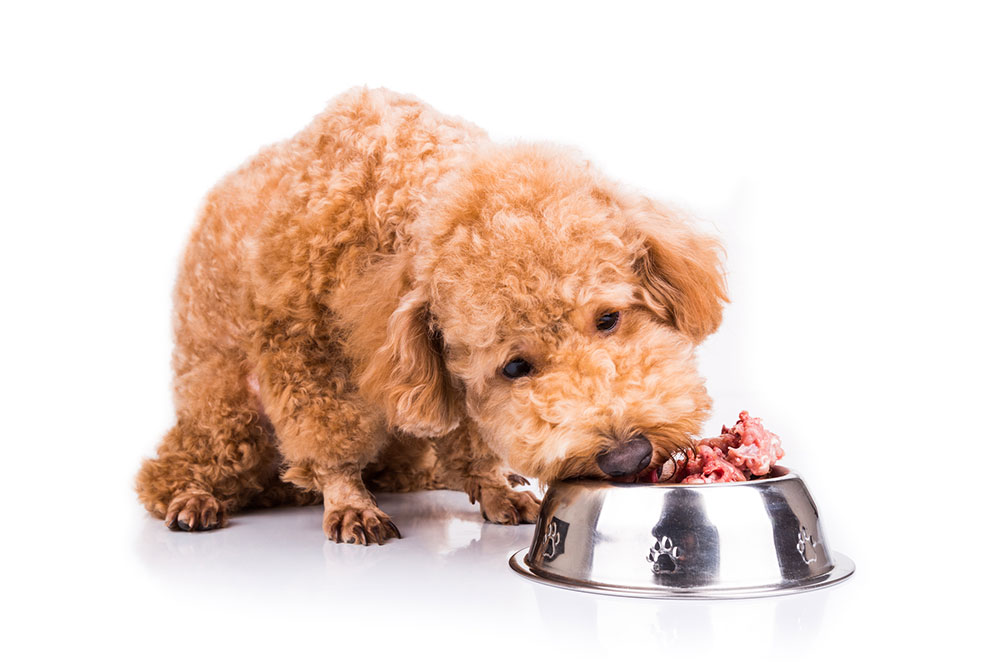
We ask this to determine if your pet will have difficulty switching over to their new diet. If your pet has been on certain hypoallergenic pet foods, or a vegan diet for 3 years they will likely struggle on the switch to raw since they haven’t eaten meat protein in years. Pets are similar to us in that way, if we have been eating a vegetarian or vegan diet for years and then switch to eating meat, chances are we will struggle with our digestion for a couple of weeks. Specifically with being on a hypoallergenic diet; pets are usually put on these diets due to severe allergy problems. Once they come off of the food and switch to a meat based diet, they will likely have severe yeast issues, which are difficult to manage, and will likely require the addition of a supplement to manage the problem.
We take all of this information gathered and add it to our raw food calculator to find the best raw food option for you and your pet.
The Average Dog
Let’s work on the average customer.
- The average dog is usually about 3-4 years old.
- They are usually about 80 lbs and their breed is common, like a Labrador retriever.
- It is common for labs to have low activity and to be overweight so they may need to adjust their weight to 77lbs.
- Labs have many health concerns – usually some type of allergy, overweight, and high yeast output. These issues are likely all caused by the extensive use of fillers in the dry dog food they were eating and can be fixed by a raw food diet, or with more serious conditions must be partnered with a yeast-destroying supplement.
- The dog was previously eating the most sold dog food in 2022 – Purina® Pro Plan® Adult Complete Essentials Shredded Blend Chicken & Rice Dry Dog Food.

Here are the results from the info being entered onto the Tail Blazers Raw Food calculator app:
This dog would be eating approx 1.5 lbs. Now if we put in that the activity level was moderate and the weight was 80 lbs that feeding amount would increase to 2 lbs a day which for an overweight dog would be enough to keep them at that weight. You can feed this dog the whole serving once a day or split the 1.5lbs into 2 meals. I would suggest that this dog eat a variety of at least 3 proteins for 2 months to see drastic changes.
On the side, I would also suggest a more vigorous exercise plan for them – AND NO MORE TREATS. Unless they are single ingredients, low calorie, and healthy, such as Crump’s Mini Liver Bites. Labs will eat everything and anything put in front of them so when I say treats that includes table scraps too. Put a family plan together so your household is all on the same page. NO MORE!
The Average Cat
- The average cat on dry food unfortunately at this point in switching, usually already has major health concerns, like extreme allergies, decreased kidney function, or diabetes.
- However, let’s start on the happy side and pretend that it’s a one-year-old cat switching to raw!
- This cat weighs about 12 pounds and is moderate to highly active since it is an indoor/outdoor cat.
- This cat is in perfect health
- No health concerns – apart from some tartar buildup on the teeth.

This cat is currently eating First Mate Cat & Kitten
Here are the results:
This cat would be eating about 0.3-0.4 lbs of food a day. This is just under half a pound. This meal I would split into 2 servings a day. Because of the mild buildup of tartar on the cat’s teeth, I would also suggest the addition of chicken necks for chewing.
I think it’s important to note that the cat is already eating a high quality and healthy kibble, the owner is wishing to see benefits of a raw diet for their cat.
Making The Switch
For the most part – dogs are extremely easy to switch to raw dog food. If they have eaten kibble their whole lives they may be a bit confused however they usually take to it quickly.
- The trick here (if they are hesitant) is to be persistent. DO NOT give up after one or 2 tries. We see this all too often, and it’s not the pet’s fault, it’s the pet parent’s for not being more persistent.
- Many books suggest that it is a good idea to fast (do not feed) the animal for 12-24 hrs to get the digestive system ready. I tend to suggest a short fast. For example, feeding the old food in the morning and no food (lots of water) until the next morning when you start the new food. This way your pet will also be very hungry and really want to dive into anything in front of them.
- Start with using the food as a treat – get them to sit and give them a little piece of the food. Continue doing this until they seem extremely interested and then feed them the full raw meal (minus the treat amount).
- Add a bit of extra moisture to the food whether it be water, goat’s milk, bone broth, or an egg. The texture of just the raw food can be a bit confusing to the dog so try to make it wetter, and then the consistency is similar to that of canned food, or thrown-up (gross, I know) dog food. When dogs puke up food they are likely to just lick it up again.
- If none of these tips work for you, just be persistent, your dog might hold out for a day or 2 but will eat eventually. Make the raw food their only option.
- If your pet is sick please consider talking to a pet nutrition expert or one of our expert team members before switching yourself. Older dogs or dogs with pancreatitis will need to be fed a lower-fat diet and will need to split their meals up more. These are not easy switches.
Cats, Cats, Cats
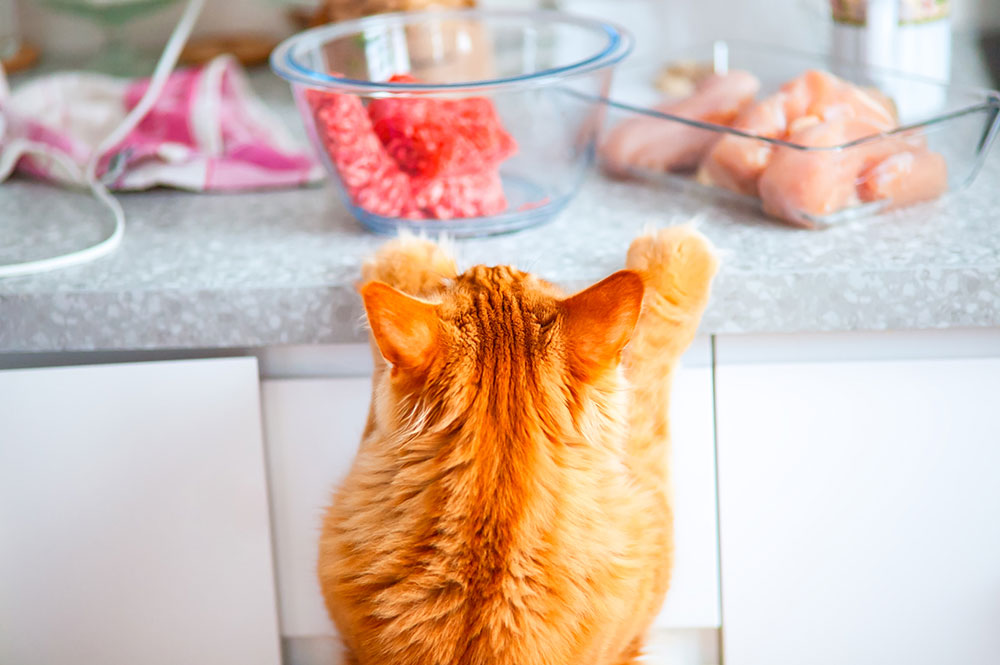
So how do we switch them to raw food?
- The trick here is if you get them as a kitten you should be introducing as many different feeding options to them as possible. EVEN IF you aren’t planning on sticking to that diet, they should be trying wet, dry, freeze dried, air dried, raw and all other possible feeding options. This way you are creating a variety for them, and if you need to switch in the future to a different option it will seem familiar to them.
- If your cat is already an adult, persistence is key, and making the food as different as possible is also important. Feed them in a different place – if you feed kibble on the counter in the kitchen, feed your cat in the living room on the floor instead. Put the food in a different bowl – if you are feeding in a plastic bowl, try stainless steel for the raw bowl. If you make it seem like this food isn’t normal, then they will not see it as you replacing something they know and love, but see it as something new and exciting.
- Cats can sometimes be particular about the temperature of the raw food. So let their food get to room temperature before feeding can be helpful to start. You can even try adding a little bit of warm water.
- For cats, you can mix the raw food with a bit of canned food, or if they are eating dehydrated food/freeze-dried, try mixing it to help with the transition.
- Sometimes it takes a while. Once I was able to successfully switch a cat from canned to freeze-dried raw to raw food over a weekend. Another time it took over 2 weeks to switch.
- Do not “wait them out”. Cats cannot handle not eating for more than 1-2 days, as this can send them into kidney failure.
- Every cat is different so try to stay persistent.
If your pet is sick please consider talking to a pet nutrition expert or one of our expert team members about their issue before switching yourself.
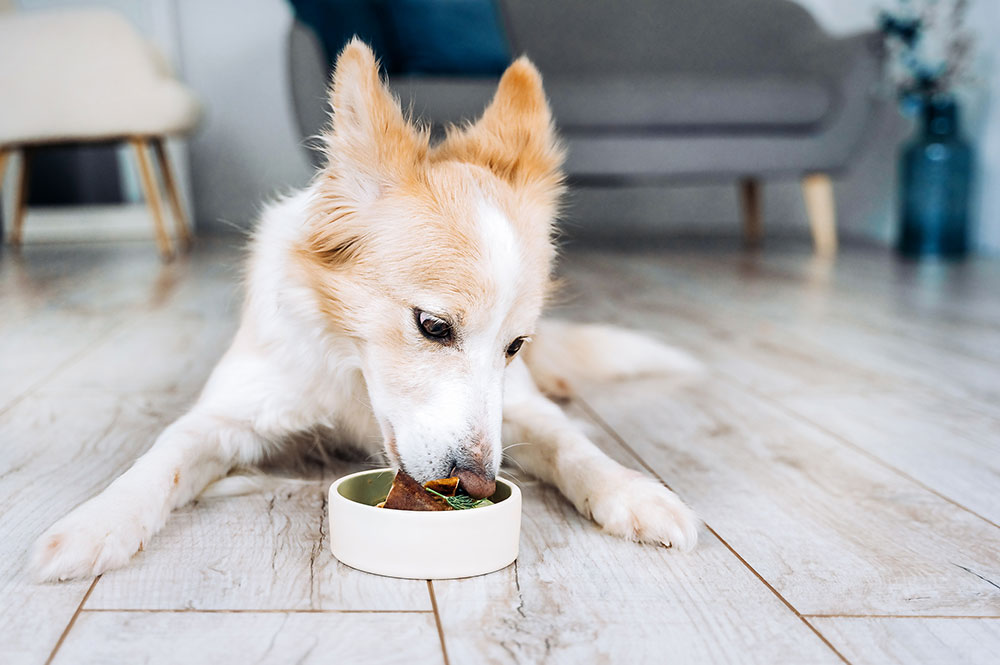
What To Expect When Switching
Here are a few things you might notice during the first few weeks of switching.
- In the first couple of days you will notice right off the bat a change in digestion. No, you won’t be able to see what’s going on inside, but you will surely notice what’s on its way out! I’m talking poop….I’m talking to the coolest poop! Raw poops are my favorite, they are a much different consistency than kibble poop, they are firmer, dryer, smaller, and WAY less smelly. Basically, these poops are just showing you that your pet has absorbed everything it possibly could from its food, and is just leaving you to pick up what material is left over.
- They will drink very little water as they are getting the moisture required for the body from the food directly
- You will notice a huge change in skin and coat after a couple of weeks. Your pet will shed less, they will be way less smelly, and they will have a beautiful silky-feeling coat. Not the greasy silky coat that leaves an oily feeling on your hands after, but a soft, silky, clean coat.
- Better breath; You should notice that your pet’s breath is smelling better, that’s because their gut is healing, and a healthy gut = a healthy pet.
There are so many benefits you will notice when switching to raw, but the best result of switching is overall health.
Common Questions
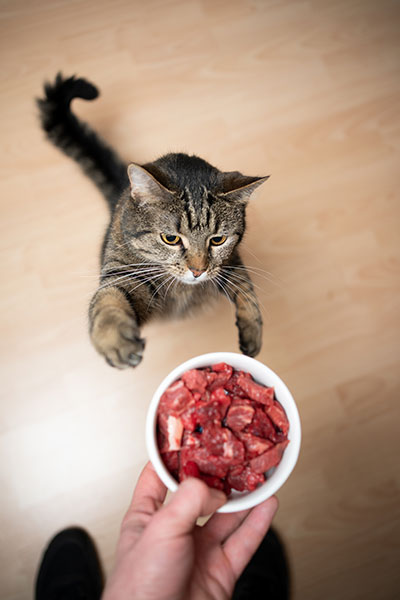
There are a few guidelines that we like to follow when switching a pet to raw feeding.
1. Can I mix my kibble with raw?
This is an extremely touchy subject in the pet food industry. Some people swear by mixing both, and some people avoid it like the plague. It all depends on your pet. If your pet has never had digestive difficulties, it should be ok to try it out and if your pet has digestive issues, it should be tried with caution, or maybe just avoided. Our suggestion: If you are interested in trying this out, give it a go. You will know whether it works for your pets or not after a few days.
2. How long can you leave the food out?
Our rule of thumb is about 45 mins. After that, there is cause for concern/bacteria growth. Raw food is just that, raw, so make sure that you treat it as such. Would you leave the thawed chicken on the counter for more than 20 mins? No – so use the same reasoning with your pet’s food. If your pet is not interested in finishing the food after 20 mins, wrap it up and try again later that day.
3. How long can the food be thawed?
Raw food can stay in your fridge, thawed for 4 days. Cat’s usually like their food fresher so 3 days is usually the cut-off for them.
4. How should I feed raw food?
Raw food should always be fed in a stainless steel bowl since stainless steel is non-porous so there is less chance for bacteria growth. Plastic is the number one bowl to avoid in a raw feeding situation.
5. Will I have to clean more?
Always clean your counters, and hands after every meal served, and always clean you pet food bowls after a raw meal. Treat raw food the same way you would treat your own raw meat.
6. What do I do when I am going out of town?
Don’t worry, there are plenty of other ways to feed your pets a “raw” food diet. You can choose from a variety of options from dehydrated, air-dried, and freeze-dried foods that are travel/camping friendly. Raw food is also available in almost every pet food store across Canada and the USA, you may just have to be comfortable switching brands while you are traveling if you cannot take food with you.
We hope that we’ve helped you see how simple it is to switch to a raw food diet. Raw feeding is a different way of feeding for sure, but once you get used to it, and see the changes in your pet, it will seem as though there was never another way to feed. We hope your switch goes seamlessly, and if you need help, don’t hesitate to stop into a Tail Blazers location near you, and experience the benefits of your pets being Tail Blazers Healthy.
Are you interested in using our Raw Food Calculator? Download our free app on iPhone or Android!
